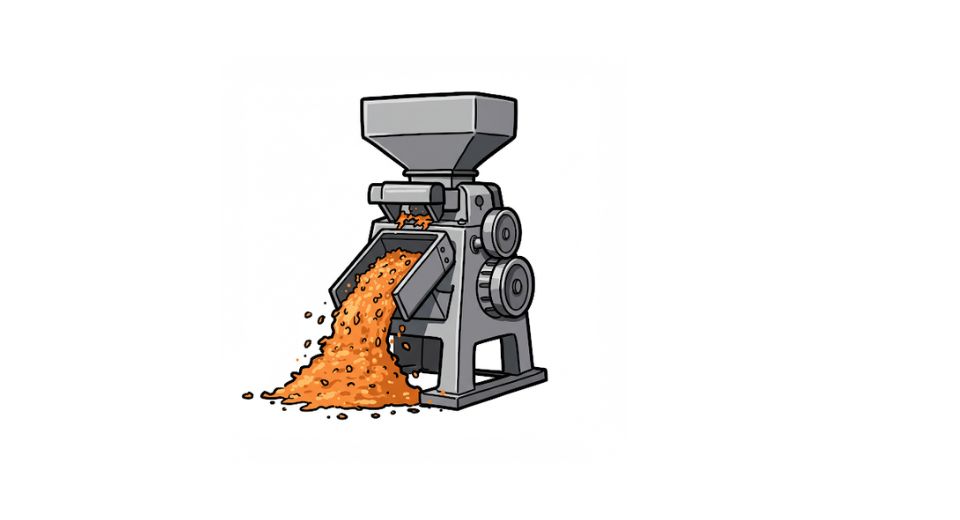
Apr 23, 2025

The report from Metastat Insight says that the global hammer mill market has been going through changes because of both market dynamics and technological progress. Hammer mills, which are a type of crushing equipment, are used in several industries, including agriculture, pharmaceuticals, and construction. It is used for grinding materials to smaller sizes, which makes it even more important in the sectors that process materials. Hammer mills are quite versatile for grinding, mixing, and breaking down materials, making them of importance in industrial applications and importance in production systems all over the world.
Global Hammer Mill market is estimated to reach $3,331.2 million in 2025 with a CAGR of 3.9% from 2025 to 2032.
This market has continuously increased for the years, primarily driven by industries seeking the best solutions for the reduction of material sizes. On the whole, the agricultural areas are finding themselves increasing the use of mill processes to perform activities like grain milling, feed processing, and manufacturing of other raw materials. In view of its mechanization and innovative and durable machinery requirements, the hammer mill in agriculture has found its place. The pharmaceutical industry is beginning to witness the widespread use of hammer mills for grinding materials into fine powders for making tablets and other pharmaceutical forms.
Another thing contributing to the Global Hammer Mill market is adopting automation in production. Most industries are now relying on automated systems to increase efficiency while consuming less manual work. Hammer mills are often a device proficient in the broadest range of operations and are most commonly used in automated production lines where they reduce size but mostly support the entire process. It also has an importance to manufacturers, who do not optimize their operations.
The advances in hammer mill design have been another major component of the expansion of applications. New-generation hammer mills are more energy-efficient, quieter, and process a wider variety of materials than their earlier versions. These improvements make the new generation of these machines an attractive solution for the concerned industry with reducing the environmental footprint while maintaining high productivity. In addition, manufacturers are now focusing on providing hammer mills with maximum customizability so they can fit in different industry needs.
The competitive landscape of the Global Hammer Mill market has thus become even more heterogeneous, since many companies have a variety of hammer mills that can fulfill certain market needs. These players are working on expanding their product range and focusing on the new market segments across which they can reach more consumers. Based on the innovations in the design and more ongoing improvements in terms of service-contact capabilities, companies were able to set themselves apart in a more market-crowded scenario.
Possibly hammer mills will not be exempt from the direct implication of global economic changes. More and more countries are aiming to better industrial production, which is why the demand for machines and plants like the hammer mill will increasingly be relevant. Current strong demand in developing markets such as Asia and Africa is primarily further fueled by infrastructure development and modernization of agriculture. Hammer mills in these areas find application in several areas ranging from food processing to the generation of biofuels, and the versatility contributes to the fast growth.
In as much as this paints an optimistic picture for the Global Hammer Mill market, it still has its challenges. Some of the challenges that may hinder the Global Hammer Mill market from growing include high energy consumption, maintenance costs, and the availability of skilled labor to operate the equipment. The manufacturers are tackling these challenges by coming up with energy-efficient models and hammer mills with less maintenance to cater to the cost-effective and wide use of hammer mills in industries.
The legal environment is also a market regulator. Governments are emphasizing stricter environmental regulations, which have resulted in a redesign and revamping of the hammer mills' functioning. Manufacturers are obliged to conform to these regulations, usually resulting in increased manufacturing costs. This situation presents opportunity for further development, as these companies will search for ways to produce their goods according to the environmental regulations while retaining production efficiency.
The growth in the Global Hammer Mill market will continue in the forthcoming years due to technological advancement and the rising demand for efficiency in industrial processes. The recent transition toward automation and environmental-friendly production methods will further increase the acceptance of hammer mills in the industries that require material size reduction. As the industries evolve, hammer mills will play an important role in drastically reshaping production procedures worldwide.
To summarize, the Global Hammer Mill market, as per Metastat Insight, on the one hand indicates a sector that is adapting to the shifting technological and market dynamics. Advances in design, with a growing demand for automation, and increasing applications in a variety of industries, hammer mills remain the bedrock of material processing. Growth and diversification will, more so in the near future, continue to be witnessed due to these ongoing trends, opening plenty of opportunities for both the manufacturers and the end-users alike.
Drop us an email at:
Call us on:
+1 214 613 5758
+91 73850 57479